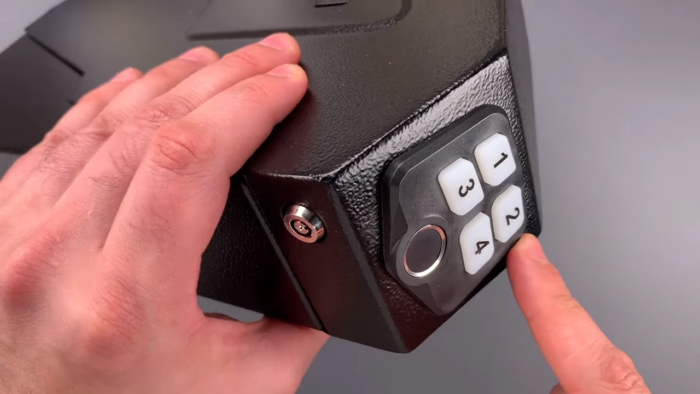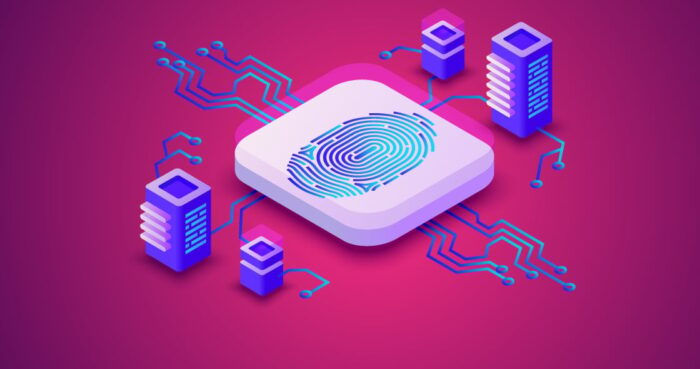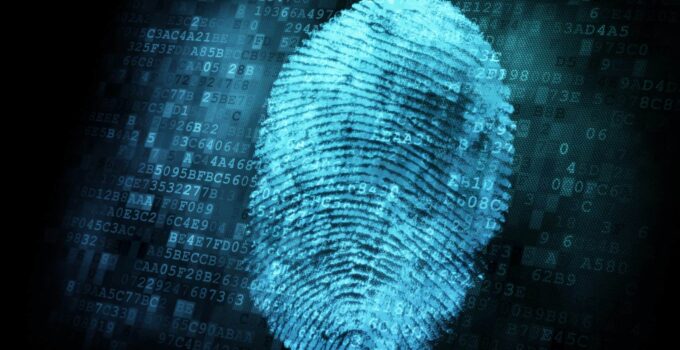Nowadays, fingerprint identification is built into nearly all electronic devices we use regularly. There have been widespread improvements to security infrastructure in response to rising crime and terrorism risks. This biometric scanner also replaces passwords, ID cards, and door access codes to track attendance and manage employees. The fact that it has become the most refined and extensively distributed biometric security solution on the market is not surprising, given its speed, lack of invasiveness, and ease of use.
The software can perform its function because it can parse the fingerprint and identify relevant features, called minutia points. The scanner detects alignment, ridge orientation, arcs, spirals, and furrows in print. To confirm the user’s identification in the future, the software records and retains these granular details. Using a person’s unique biometric characteristics for fingerprint safes can ensure that only authorized individuals can access its resources.
Pros And Cons Of Fingerprint Safes

Source: hackaday.com
Weighing the benefits and drawbacks carefully before purchasing this cutting-edge technology is necessary. Check out the following advantages and drawbacks to help you decide if it’s a good move for your business to use if you’re still on the fence.
Advantages Of Fingerprint Safes
1. Cost Efficient
Fingerprint recognition is currently a cost-effective security solution from the point of view of technology management. This is because fingerprint recognition has become more advanced. Small, handheld scanners are simple to set up and boast high precision.
2. High Level Of Safety
An individual’s fingerprint is one of their most distinguishing characteristics. Security-wise, it’s a league above passwords and ID cards. The information associated with a person’s fingerprints is more secure than that related to their photo or password.
This is because fingerprints are significantly more difficult to forge than images and undergo very little change throughout a lifetime. Similar to a code, a fingerprint pattern cannot be guessed. Fingerprint scanners for access control compare a person’s biometric information with all that is stored in a database.
The person can access the secured area or resources if the information matches. Biometric access control systems are among the safest authentication methods available. Using fingerprint access control technology lets businesses build a safe workplace where only certain people can visit certain buildings or rooms.
3. Simplicity And Ease Of Use

Source: xailient.com
They require little or no training to use. It avoids digging up your old password or getting turned away because you forgot your ID at home. Your fingerprints follow you everywhere. Whenever you touch something, it leaves a fingerprint.
4. Transfer Proof
It cannot be used by someone else. Thus, employees cannot sign in for them or share their passwords. With this, you can keep better tabs on your staffing levels and safeguard valuable assets from theft.
5. Higher Accountability
Employers can rest assured that their employees are more accountable when fingerprints are used. It is challenging to dispute biometric evidence showing you were present when an event occurred. This evidence can be presented as evidence if necessary.
In addition, fingerprint access control system users can consult a log of past events. Compared to a passcode, which requires all employees to use the exact numbers, the time and date of each entrance make it possible to easily track who accessed a restricted area.
6. Access In An Emergency
The time it takes to try to recall a combination or locate a key could be too great a burden in an emergency. Getting into your safe and retrieving whatever you need takes up to two seconds.
Disadvantages Of Fingerprint Safes

Source: nevis.net
1. Technical Glitches
The scanners are vulnerable to the same technological problems and limits as any electronic identification systems, including power outages, operator inaccuracy, and environmental conditions.
2. Cost
Fingerprint identification systems may be more reasonably priced now than ever, but their initial and ongoing expenses may still be prohibitive for sure smaller businesses.
3. Unavoidable Circumstance
Some people will be left out of the system even though fingerprints tend to stay consistent throughout a person’s life. Those with a history of physical labor, such as the elderly, may have trouble registering their worn prints into a system. Those who have lost fingers or hands would also be left out.
Even a minor cut on the finger used for authorization could prevent someone from entering who otherwise would have been allowed to do so. Having sweaty palms or oily or dry skin can prevent low-quality devices from correctly identifying authorized users. However, this issue can be easily prevented by supplementing the fingerprint scan with a passcode or distributing access control cards.
Things like dirt, dampness, grease, moisturizers, saliva, blood, glue and sunscreen present on the finger can also cause problems with non-scans. In most cases, you’ll be able to get these problems resolved if you wipe down the scanner. Use a finger scanner to scan your finger several times and invest in a high-quality safe with a fingerprint scanner with a low false-positive rate.
4. False Positives
Suppose someone whose fingerprints aren’t stored in the system manages to access the safe. In that case, this could be considered a false scan depending on the scanner’s DPI.
Modern safes rarely have wrong scans, often known as false positives. However, these incidents are still possible, especially in biometric safes of poor quality. A high-quality scanner is essential, so look for one with a high DPI.
Conclusion
Over the last 20 years, biometric technology has progressed. While biometric safes may still give erroneous readings, newer and better scanners are less likely to do so. Considering there aren’t many moving components or cameras required, installing a fingerprint access control system should be a breeze. It is a secure and convenient solution for any firm. Only a few steps are needed to connect a fingerprint reader to a door lock. A fingerprint lock could answer your prayers if you need complete control over the safe and audit trail of every person that has accessed it.




